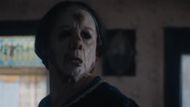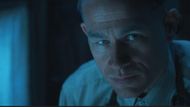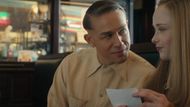The transformation of Charlie Hunnam in Monster: The Ed Gein Story is truly among his boldest undertakings yet. Stepping into the shoes of this infamous murderer, Hunnam chooses to highlight the mental traumas and deeply disturbed loneliness that surrounded the character, conjuring a portrait that is haunting yet eerily human.
Lauded for historic horror fused with utter human emotion, the 2025 release certainly put Hunnam's creative spectrum on display. Hunnam focuses on vulnerability, silence, and subtle expression rather than churning horror for horror's sake, turning Ed Gein into a chilling study of obsession and loss.
From horrifically calm childhood flashbacks dripping with childlike cruelty to highly unsettling moments of madness, Hunnam guarantees a lingering aftereffect, cementing his image as one of the bravest faces of his generation.
7 best Charlie Hunnam moments from Monster: The Ed Gein Story that portray the star's creative prowess
1) Ed’s troubled childhood

The early scenes portray Ed Gein as a boy under the strict supervision of his mother, Augusta. Charlie Hunnam accurately reflects how innocence in a child gradually turns into fear and confusion. His subtle facial expressions and quiet nature are enough to tell an emotional pain story without uttering too many words.
These scenes explain how trauma starts early in the life of Ed and molds his deranged mind later. Hunnam's peaceful but troubled eyes bring sympathy and unease to the audience, demonstrating that he really comprehends this complex character.
2) The awkward bar encounter

During the diner scene, Ed attempts to be normal in front of two women but is unable to keep his discomfort suppressed. Hunnam infuses a blend of charm and creepiness that makes you on edge. His nervous grin and darting eyes depict Ed's wish to connect with other people, but his inner evil keeps dragging him off.
This scene is particularly memorable since it's not violent but psychological. Hunnam demonstrates that without the horror or gore, he is capable of making an ordinary conversation uncomfortable and emotionally profound.
3) The grave robbing sequence

Perhaps the most frightening scene is Ed's nighttime grave robbing. Hunnam is horrifying to watch and heartbreaking at the same time. Rather than making Ed a one-dimensional monster, he presents a man consumed by his desires and guilt.
His shaking hands and labored breathing leave the audience with a sense of his terror and shame. The camera lingers as he grapples between repulsion and grief, demonstrating how well Hunnam fills the character with terror and tragedy.
4) The Psycho inspired scene

In a chilling tribute to Alfred Hitchcock's Psycho, a retreaded shower-scene moment captures Ed's obsession with terror and self. Hunnam's response before and after this scene is one of bewilderment, curiosity, and emotional breakdown. Instead of dwelling on the gore, his acting makes the sequence an exploration of the human psyche.
Critics have lauded this moment as a mix of cinematic history with Hunnam's daring creative decisions. That's where he demonstrates that he can combine psychological richness with cinematic nods in a manner that's simply unforgettable.
5) The diagnosis revelation

Episode seven provides us with one of the series' most poignant moments, Ed being diagnosed with schizophrenia. Hunnam's delivery of the breakdown is heartbreakingly vulnerable. His voice trembles, his eyes brim with tears, and his silence means more than any words.
Rather than acting the scene as a whole crazy, he infuses it with humanity and agony, making it easy for viewers to grasp the man behind the offenses. This is made possible by Hunnam's capacity to elicit sympathy from viewers for a character whose history is recalled only as a murderer.
6) The final vision

In the climax, Ed is tormented by visions of the individuals he's touched and the atrocities he's wrought. Hunnam's face is a map of remorse, terror, and understanding. The dreamlike staircase sequence, in which Ed appears to deal with his past and mother, is a visual feast and an emotionally burdened experience.
Hunnam shifts from fear to placid acceptance, demonstrating his emotional mastery as an actor. The climax reveals not only Ed's destruction but also Hunnam's artistic genius in depicting redemption with madness.
7) The power of silence

One of Hunnam's finest performances occurs in silence. The moments when Ed sits by himself, gazing into nothing, daydreaming, are truly powerful. His posture screams the hunched shoulders, the labored breathing, and the exhausted eyes.
These are quiet, quiet moments that allow fans to witness Ed's loneliness and shame without having anything said. Silence rarely feels this weighty on screen, and Hunnam uses it perfectly to remind us that horror can be found even in quiet.
The performance that Hunnam offers in Monster: The Ed Gein Story is one lying on the far side of mere imitation in itself. A complete work on the emotional and psychological dynamics of storytelling. It turns a terrifying true story into a complex human entity shadowed by fear, empathy, and tragedy in equal proportions. Every gesture, every pause seemed so deliberate in throwing into view the tormenting layers of Ed's mind.
Towards the end, Hunnam leaves the audience wondering about right and wrong, madness, and compassion. Such an unafraid portrayal lifts the show to another level and places Hunnam really among the most inspired and dedicated of contemporary actors.
